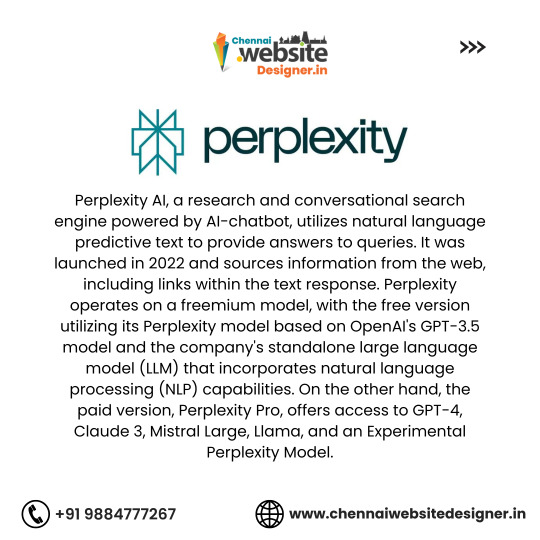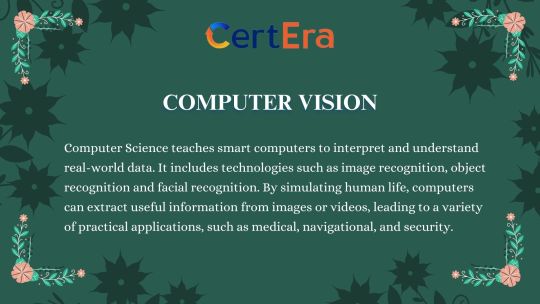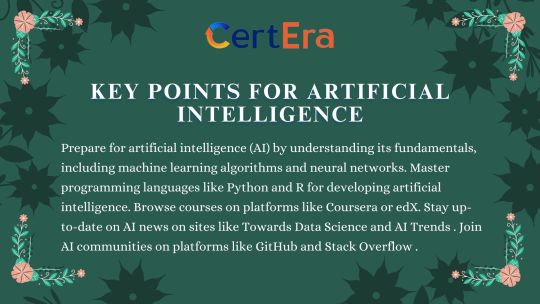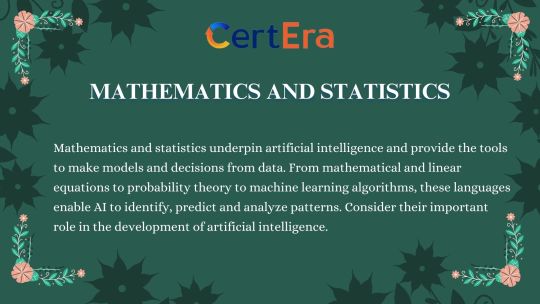#AIProgress
Explore tagged Tumblr posts
Text
How is AI transforming every aspect of human life?
AI is transforming every aspect of human life by revolutionizing the way we work, communicate, learn, and live. Here are some key areas where AI is making a significant impact:

What is Artificial Intelligence?
Artificial Intelligence (AI) refers to the simulation of human intelligence in machines that can perform tasks requiring human-like cognitive abilities. It involves machine learning, natural language processing, computer vision, and other advanced techniques.
How does it impact every industry?
AI has the potential to revolutionize every industry by automating processes, analyzing vast amounts of data, and making intelligent predictions. It improves efficiency, enhances decision-making, and drives innovation across sectors such as healthcare, finance, manufacturing, and transportation.
How does it impact every individual?
AI impacts individuals by providing personalized experiences, virtual assistants, and smart devices. It enhances daily life through voice recognition, recommendation systems, and virtual customer support. AI-powered technologies make our lives easier, more convenient, and efficient.
AI is transforming every aspect of human life by revolutionizing the way we work, communicate, learn, and live. Here are some key areas where AI is making a significant impact:
1. Healthcare:
AI is enhancing medical diagnosis, drug discovery, and personalized treatment plans. It helps analyze vast amounts of patient data, identify patterns, and provide accurate predictions for disease prevention and early intervention.
According to Accenture, AI in healthcare could potentially save up to $150 billion annually for the U.S. healthcare economy by 2026.
The global AI in healthcare market is projected to reach $45.2 billion by 2026, growing at a compound annual growth rate (CAGR) of 44.9% from 2019 to 2026.
2. Education:
AI is revolutionizing education by enabling personalized learning experiences, adaptive tutoring, and intelligent assessment systems. It helps tailor educational content to individual student needs, track progress, and provide timely feedback for better learning outcomes.
The global AI in education market is expected to reach $3.68 billion by 2025, with a CAGR of 38.17% from 2018 to 2025.
A study by the American Institutes for Research found that AI-powered tutoring systems have a positive impact on student learning outcomes, resulting in an average percentile gain of 28 points.
3. Transportation:
AI is driving advancements in autonomous vehicles, optimizing traffic management systems, and improving transportation efficiency and safety. It enables self-driving cars, real-time navigation, and predictive maintenance, revolutionizing the way we commute and travel.
The global autonomous vehicle market is projected to reach $556.67 billion by 2026, with a CAGR of 39.47% from 2019 to 2026.
According to the National Highway Traffic Safety Administration, AI-powered advanced driver-assistance systems (ADAS) have the potential to reduce traffic fatalities by up to 94%.
4. Communication:
AI-powered language translation, natural language processing, and speech recognition technologies are transforming communication. Chatbots, virtual assistants, and language translation tools facilitate seamless cross-cultural communication and enhance accessibility.
The global AI in communication market is expected to reach $3.5 billion by 2026, growing at a CAGR of 34.7% from 2019 to 2026.
AI-powered language translation technologies have advanced significantly, with Google Translate handling more than 100 billion words daily in over 100 languages.
Virtual assistants like Siri, Alexa, and Google Assistant leverage AI to understand and respond to user commands, making voice-based communication more convenient and efficient.
5. Entertainment:
AI is reshaping the entertainment industry with personalized content recommendations, virtual reality experiences, and computer-generated imagery. It enhances user experiences, facilitates content curation, and enables immersive storytelling.
The global AI in the entertainment market is projected to reach $5.5 billion by 2026, with a CAGR of 25.4% from 2019 to 2026.
AI algorithms are used in content recommendation systems of streaming platforms like Netflix and Spotify, which account for a significant portion of their user engagement and revenue.
AI-powered computer-generated imagery (CGI) has transformed the visual effects industry, enabling the creation of realistic and immersive experiences in movies, video games, and virtual reality.
6. Finance:
AI is revolutionizing the financial industry with automated trading, fraud detection, risk assessment, and personalized financial advice. It enables efficient data analysis, real-time market insights, and improved decision-making processes.
A report by PwC estimates that AI could contribute up to $15.7 trillion to the global economy by 2030, with the financial sector being one of the largest beneficiaries.
AI-driven automated investment platforms, also known as robo-advisors, managed over $1 trillion in assets globally in 2020.
7. Smart Homes:
AI-powered smart home devices and virtual assistants, such as voice-activated speakers and smart thermostats, make our daily lives more convenient and efficient. They automate tasks, provide personalized recommendations, and create a connected and intelligent living environment.
The global smart home market is expected to reach $246.97 billion by 2027, with a CAGR of 11.6% from 2020 to 2027.
Voice-activated smart speakers, powered by AI assistants like Amazon Alexa and Google Assistant, have seen widespread adoption. As of 2021, there were over 200 million smart speakers in use worldwide.
8. Manufacturing:
AI-driven robotics and automation technologies optimize manufacturing processes, increase productivity, and improve product quality. AI-enabled machines and robots perform complex tasks, enhance precision, and enable predictive maintenance.
The global AI in manufacturing market is expected to reach $16.7 billion by 2026, growing at a CAGR of 49.5% from 2019 to 2026.
According to Deloitte, companies that invest in AI and advanced automation technologies in manufacturing can experience productivity gains of up to 30%.
AI-powered predictive maintenance can reduce equipment downtime by up to 50% and maintenance costs by up to 10-40%.
9. Agriculture:
AI is transforming agriculture by optimizing crop management, monitoring soil conditions, and predicting weather patterns. It enables precision farming techniques, reduces resource waste, and improves agricultural productivity.
The global AI in agriculture market is projected to reach $4 billion by 2026, with a CAGR of 22.5% from 2021 to 2026.
AI-powered agricultural robots and drones are expected to reach a market value of $1.3 billion by 2026.
The use of AI in agriculture can increase crop yields by up to 70%, according to a study by the International Data Corporation (IDC).
10. Cybersecurity:
AI is strengthening cybersecurity measures by detecting and preventing cyber threats, identifying anomalous behavior, and improving data protection. AI algorithms analyze large datasets to detect patterns and anomalies, enhancing security measures.
According to Gartner, by 2022, 90% of security budgets will be allocated to addressing AI-powered cyber threats.
The global AI in cybersecurity market is projected to reach $38.2 billion by 2026, growing at a CAGR of 23.3% from 2021 to 2026.
In summary:
AI is transforming every aspect of human life, from healthcare and education to transportation, communication, entertainment, finance, and beyond. Its applications are vast and diverse, revolutionizing industries, improving efficiency, and enhancing the overall human experience. As AI continues to advance, it holds immense potential to shape a future where intelligent technologies seamlessly integrate into our daily lives, making them more convenient, productive, and enriching.
#aiinnovation#artificialintelligence#airevolution#futuretechnology#transformativetech#aiadvancements#ai applications#aiprogress#aiinsociety#emergingtech#techtrendsin2023#aiimpact#aiintegration#aiforgood
15 notes
·
View notes
Text
I can’t help but feel both fascinated and overwhelmed by the rapid development of AI. It’s honestly mind-blowing how quickly technology is advancing, and how much it’s reshaping the world around us.
From language models like ChatGPT to the cutting-edge tools that are transforming industries, AI is changing everything – and it's happening faster than I ever imagined. It feels like every time I turn around, there’s a new breakthrough, a new application, or a new development that takes things even further. The speed at which AI is progressing is both exciting and, if I'm being honest, a little intimidating.
What really gets me is the potential. We’re already seeing AI revolutionizing healthcare, enhancing our understanding of the universe, and even making our daily lives easier in ways we never thought possible. But what’s really wild is thinking about what’s coming next. We’re only scratching the surface of what AI can do.
It also makes me think about how far AI can go. In some ways, it feels like we’re on the verge of something truly monumental – something that could redefine human potential. But at the same time, I find myself wondering how we’re going to keep up with it all. Are we ready for the societal and ethical implications of all this? And, more importantly, how do we balance innovation with caution?
I think one of the things that excites me the most is how AI can be used creatively – in art, writing, music, design. The possibilities for AI-assisted creativity are endless, and it’s amazing to see what people are already doing with it. At the same time, there are concerns around it replacing human jobs and creativity, which is a valid concern. The future of AI is a bit of a double-edged sword, and while it has massive potential, it comes with the responsibility of figuring out how to use it ethically and sustainably.
It’s a crazy time to be alive, that’s for sure. The future of AI holds so much promise, and I can’t wait to see what’s next. But I also know we have to tread carefully as we navigate this new frontier.
#AI#ArtificialIntelligence#AIRevolution#TechDevelopment#FutureOfAI#AIProgress#Innovation#AIandSociety#AIinArt#TechTrends#DigitalTransformation#AIpotential#AIethics#Technology#Futurism#TechInnovation#AIcreativity#AIDevelopment#MachineLearning#AIexploration#AIinHealthcare
0 notes
Text
#DeepSeekAI#AIRevolution#ChatGPT#TechDisruption#MarketLosses#NVIDIA#DeepSeekR1#AIProgress#AIinYourPocket#RaspberryPi#OfflineAI#JanusPro#ImageGeneration#VisualUnderstanding#USvsChina#AIBattle#GrowthMindset#Innovation#TechInnovation#LearnAI#SeizeOpportunities
1 note
·
View note
Text

Trump announces a $500 billion AI infrastructure investment in the US. Read More....
#TrumpAIInvestment#500BillionAI#AIInfrastructure#AIRevolution#TechInvestment#FutureOfAI#AIinAmerica#TrumpTech#AIandPolitics#BigTechNews#TechForAmerica#AI2025#AmericaLeadsAI#AIInnovation#AIandEconomy#TechInvestments#AIProgress#500BillionDollarDeal#AIInfrastructure2025#TechFuture
0 notes
Text
youtube
Humanoid robots are rapidly advancing: The article explores how cutting-edge humanoid robots are increasingly capable of social interaction, complex tasks, and integration into daily life, with significant potential for future applications.
Pepper the social robot: Pepper is a pioneering humanoid robot designed for social interaction, recognized for its ability to engage with people naturally, making it popular in businesses and educational institutions worldwide.
Beomni's remote work innovation: Beomni, developed by Beyond Imagination, is a versatile humanoid robot designed for remote work, capable of performing a wide range of tasks with human-like precision in diverse environments.
Geminoid F's realistic human-like features: Geminoid F, a lifelike humanoid robot created by Japanese roboticist Koshi Ishiguro, is designed for public interaction, notable for its natural facial expressions and reduced cost through innovative actuator design. Ameca's cutting-edge technology: Engineered Arts'
Ameca is the most advanced humanoid robot, combining AI with sophisticated design to enhance human interactions in both digital and physical environments, despite having non-functional lower limbs.
#AIevolves#humanoidrobot#humanoid#humanoidrobots#AIadvancements#robotics#artificialintelligence#technology#Technology#Innovation#TechnologyRevolution#FutureInnovation#AIInnovation#TechCompetition#InnovativeTechnology#FutureTech#AIAdvancements#RoboticsEvolution#TechLeadership#TeslaVsBostonDynamics#Automation#AIlearning#InnovationJourney#TechEnthusiasts#SubscribeNow#AICommunity#TechInsights#RoboticRevolution#AIProgress#CuttingEdgeTech
0 notes
Text
What is Artificial Intelligence?
Artificial Intelligence (AI) is a programmed system to think and act rationally like humans. AI is the buzzword in the technology industry as it offers efficiency and speed to operations.

With expertise in building AI tools for leading companies, Vee Technologies offers cutting-edge solutions to its clients’ needs. AI tools bridge the gap between humans & technology across all industries like finance, healthcare, communication, and more.
#AI#ArtificialIntelligence#MachineLearning#DeepLearning#TechInnovation#AIDevelopment#AIRevolution#IntelligentTech#AIApplications#AIProgress#AIResearch
0 notes
Text
instagram
OpenAI's new scale measures AI progress from chatbots to AGI!
🔹 Level 1: Today's chatbots (like ChatGPT). 🔹 Level 2: Solving basic PhD-level problems. 🔹 Level 3: Taking actions on users' behalf. 🔹 Level 4: Creating innovations. 🔹 Level 5: Performing entire organizational tasks.
AGI is still a distant goal, requiring immense computing power. This scale clarifies our journey toward smarter AI! 🤖 . . .
For more AI related updates, follow @trillionstech.ai
0 notes
Text

The only perspective on AI that matters
0 notes
Text

Introducing Perplexity AI, the latest competitor to ChatGPT! 🚀 With its advanced algorithms and natural language processing capabilities, Perplexity AI is set to revolutionize the world of conversational AI. Get ready for a new era of interactive and intelligent chatbots! . . . . . Follow for More: @chennaiwebsitedesigner
#perplexityai#AICompetition#AI#perplexity#predictions#AIrevolution#conversationalAI#advancedalgorithms#naturallanguageprocessing#intelligentchatbots#interactiveAI#newera#technologyinnovation#AIcompetition#cuttingedge#revolutionarytech#innovativeAI#chatbotdevelopment#AIcapabilities#futuretech#AIprogress#AIdevelopment#nextgenerationAI
1 note
·
View note
Text

In an attempt to overtake OpenAI, the leader in the generative AI industry, Meta Platforms unveiled early versions of its most recent large language model, Llama 3, and an image generator that updates images in real time while users input instructions on Thursday. The virtual assistant Meta AI, which the company is promoting as the most advanced of its peerless free-to-use offerings, will incorporate the models. To put the assistant in a more direct competitive position with Microsoft-backed OpenAI's breakout smash ChatGPT, the assistant will receive more prominent billing on Meta's Facebook, Instagram, WhatsApp, and Messenger apps in addition to a new standalone website.
#MetaAI#Llama3#ArtificialIntelligence#AIModel#TechNews#Innovation#MetaRelease#EarlyAccess#Technology#AIDevelopment#MetaTech#AIResearch#DigitalTransformation#TechInnovation#AIProgress#FutureTech#MetaUpdates#TechCommunity#TechTrends#MachineLearning#DeepLearning#AIAdvancement#MetaNews#TechIndustry#AIInnovations#breaking news#world news#global news#news#usa news
0 notes
Text
Coding using AI on Codiumate Agent platform
Introduction CodiumAI’s Codiumate Agent AI is an advanced artificial intelligence designed to assist users in coding-related tasks. It operates within an IDE, providing real-time support, error detection, and code optimization suggestions. The agent leverages deep learning algorithms to understand and generate code, making it an invaluable tool for developers looking to enhance productivity and…

View On WordPress
#AIAdoption#AIAnalytics#AIandSociety#AIApplications#AIChallenges#AIEducation#AIEmpowerment#AIEntertainment#AIExpertise#AIExploration#AIforGood#AIHealthcare#AIIndustry#AIInnovation#AIInsights#AIInspiration#AIJourney#AIProgress#AIUnleashed#AlImpact#ArtificialIntelligence#Automation#CuttingEdgeAI#DataScience#DigitalTransformation#EmergingTech#EthicalAI#FutureOfWork#FutureTech#HumanMachineCollaboration
0 notes
Text










"AI-Ready? Learn the fundamentals of machine learning, data analysis, and coding. Continue to be inquisitive, flexible and open to lifelong learning! #AIprep.
For more information visit www.certera.co
#AIprep#AIskills#AIlearning#AIeducation#AItips#AIstudy#AIdevelopment#AIfuture#AItechnology#AInetwork#AItraining#AIknowledge#AIstrategy#AImindset#AIcareer#AIinnovation#AIprogress#AIadvancement#AIgrowth#AIcurriculum#AIsyllabus#Certera
0 notes
Text
DeepSeek AI Shakes the Tech World: Massive Market Losses & a Game-Changing AI Revolution 🚀
The last 48 hours have been historic for the AI industry, with shocking developments that are reshaping the landscape.
Key Highlights:
$1 Trillion Lost in the US Market That’s a staggering 121,597,900,000,000 BDT—too big for most calculators.
ChatGPT Hits #2 on App Stores in the US, UK, and China
NVIDIA Loses $593 Billion in Market Value And the most surprising reason? A Chinese open-source side project called DeepSeek AI.
What Makes DeepSeek AI a Game-Changer?
DeepSeek R1 is nearly as powerful as ChatGPT’s paid model (GPT-4 Turbo).
Someone ran DeepSeek R1 on a Raspberry Pi, achieving 200 tokens per second, making offline AI in your pocket a reality.
DeepSeek released a new model, Janus-Pro, for image generation and visual understanding, and testers say it outperforms ChatGPT’s DALL·E.
The Big AI War: US vs. China
The US banned chip exports to China to slow its AI growth.
The US restricted companies from helping China manufacture advanced chips.
Yet, DeepSeek was built using older, cheaper NVIDIA A100 and H800 chips.
The Takeaway: The Power of a Growth Mindset
Despite global restrictions, China found a way to innovate and disrupt the AI industry. This proves that opportunities are everywhere—you just need to seize them.
Want to learn AI?
Use the Internet
Watch YouTube tutorials
Leverage ChatGPT & DeepSeek AI
We are surrounded by an ocean of knowledge—let’s use it wisely and move forward.
If DeepSeek AI can achieve this with limited resources, what’s stopping you from achieving your goals?
Believe in yourself, work hard, and stay consistent—Success is inevitable, Insha’Allah.
#DeepSeekAI#AIRevolution#ChatGPT#TechDisruption#MarketLosses#NVIDIA#DeepSeekR1#AIProgress#AIinYourPocket#RaspberryPi#OfflineAI#JanusPro#ImageGeneration#VisualUnderstanding#USvsChina#AIBattle#GrowthMindset#Innovation#TechInnovation#LearnAI#SeizeOpportunities
1 note
·
View note
Text
youtube
Session 16 : What is Reinforcement Learning | Explained: Key Concepts and Model Breakdown
Welcome to Session 16! 🚀 In this enlightening session, we dive deep into the fascinating world of Reinforcement Learning. 🤖 Get ready for a comprehensive exploration as we break down key concepts and unravel the mysteries behind Reinforcement Learning models.
youtube
Subscribe to "Learn And Grow Community" YouTube : https://www.youtube.com/@LearnAndGrowCommunity LinkedIn Group : https://linkedin.com/company/LearnAndGrowCommunity Follow #learnandgrowcommunity
#ReinforcementLearning#MachineLearning#AIExplained#mlmodels#deeplearninginsights#intelligenttechnology#aiinnovation#DataScience#smarttechsolutions#aibasics#RLApplications#cognitivecomputing#AlgorithmicIntelligence#futuretechtrends#aiprogress#learnai#techevolution#mlalgorithms#aiforeveryone#aiapplications#aicommunity#aiexplained#machinelearningbasics#machinelearningjourney#ml#learnandgrowcommunity#Youtube
1 note
·
View note
Text
youtube
Global mobility is about to undergo a revolutionary shift because of new technologies in transportation. Innovations in smart transportation networks, electric air taxis, and magnetic levitation trains have the potential to fundamentally alter how we move. These developments are meant to improve transportation's speed, security, and sustainability.
Introduction of Exciting Transportation Inventions: The video introduces various futuristic transportation inventions, including self-balancing electric skateboards, amphibious vehicles, high-speed hydrofoils, and autonomous drones, showcasing the latest advancements in technology.
Zoom Shoes by Zo Technologies: Zo Technologies presents Zoom Shoes, self-balancing electric skateboards with 350W motors, offering speeds up to 12 km/h, lightweight design, and a 2-hour charge for 1.5 hours of continuous use, ideal for city travel.
Watercar H1 Panther Amphibious Vehicle: The H1 Panther, an amphibious vehicle combining off-road and high-speed boat features, can switch between land and water modes in 20 seconds, powered by a Chevrolet LS3 engine and a Mercury Bravo 2 Marine engine, suitable for adventurous explorers.
#AIevolves#newgeneration#inventions#gadgets#roboticgadgets#AIadvancements#robotics#artificialintelligence#Technology#Innovation#TechnologyRevolution#FutureInnovation#AIInnovation#TechCompetition#InnovativeTechnology#FutureTech#AIAdvancements#RoboticsEvolution#TechLeadership#Automation#InnovationJourney#TechEnthusiasts#AICommunity#TechInsights#RoboticRevolution#AIProgress#CuttingEdgeTech#FuturisticRobots#TechTrends#Youtube
0 notes
Text
Revolutionizing Learning: The Unstoppable Rise of Artificial Intelligence in Education

In the dynamic landscape of education, artificial intelligence (AI) is catalyzing a monumental shift. With algorithms fine-tuning personalized learning experiences, students engage in a tailored educational journey. AI's intuitive understanding of individual progress, strengths, and weaknesses empowers educators to refine their teaching methods. Cutting-edge technologies like machine learning and natural language processing enhance real-time feedback, fostering an interactive and adaptive learning environment. The seamless integration of AI-driven tools simplifies administrative tasks, allowing educators to focus on impactful teaching. As we navigate these transformative trends, the future of learning emerges brighter and more inclusive, guided by the relentless innovation of Artificial Intelligence in Education.

#AIinEducation#LearningRevolution#FutureofLearning#EdTechInnovations#TransformativeTrends#AdaptiveLearning#EducationalAI#InclusiveEducation#TechDrivenTeaching#AIProgress
0 notes